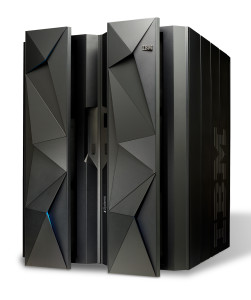Listen in on a conversation among techies today, and you’ll likely hear several recently minted buzzwords, casually dropped into conversation: Cloud. Big data. DevOps. Containers. Microservices. Hadoop. It seems the buzzword well has no bottom.
How about this one? Mainframe.
No, you say? The word mainframe hasn’t been a techie buzzword since before, well, the word buzzword was a buzzword, right?
Perhaps – but just because mainframes have been around for decades doesn’t mean they shouldn’t be a part of today’s cutting edge techie conversations. On the contrary – mainframes are alive and well, and they’re not going anywhere any time soon.
What does need a revamp, however, is the perception of mainframes – among CIOs and other executives as well as among technology teams at large.
Mainframe Perception vs. Reality
To clear up some of the misperceptions about mainframes today, mainframe tools vendor Compuware commissioned a study of hundreds of CIOs around the world. I won’t review the results of the study here, as a white paper from Compuware tackles that job admirably. Instead, I’d like to highlight three common mainframe myths that the survey reveals are still causing confusion today.
The most pervasive – and wildly incorrect – myth is that mainframes are obsolete. In reality, while there are certainly some older models still running in the wild, the mainframe as a product category is thoroughly modern.
Not only are IBM’s new z13 mainframes the most powerful, reliable systems in any category available commercially anywhere in the world, but the capabilities of today’s mainframes keep up with the times as well. They can run Linux and Java. They scale elastically, much as a cloud does. And when compared to the “plan to fail” commodity hardware we’re increasingly comfortable with in today’s data centers, mainframes are profoundly reliable.

Myth #2: The increasing emphasis on digital technologies represents a shift of workloads away from the mainframe. For anyone who has struggled with heterogeneity in today’s IT environments, legacy migration has historically been a holy grail – fervently desired yet always out of reach.
You would think, then, that with the rise of digital technologies, largely as a result of customer behavior and preferences driving enterprise technology decisions, companies would be moving away from the mainframe to cloudier, distributed computing skies.
On the contrary: digital initiatives for enterprises that have mainframes typically result in an increase in traffic to those mainframes – both because customers demand core transaction capabilities on their various devices (think mobile banking apps), but also because digital represents an explosion in the number and diversity of apps that customers demand from the companies they do business with. And for the enterprise, the more apps, the more mainframe workloads.
The third myth I’d like to dispel centers on the organizational aspects of supporting mainframe technology. The Compuware survey uncovered the common misperception that for those organizations with mainframes, maintaining siloed mainframe teams is practical moving forward.
The reason for believing this myth is straightforward: mainframes have always required specialized skills, and as the rest of IT moves onto newfangled modern technologies, there is a common belief that the mainframe folks should remain stuck in their own legacy world.
However, there are several reasons why maintaining siloed mainframe teams is becoming increasingly impractical – and in fact, may even be dangerous. First, the old guard of mainframe experts is retiring, requiring companies who depend on these bastions of reliability to bring a younger workforce up to speed. Telling millennials they won’t get to work with other teams or buzzword-compliant technologies if they join the mainframe group won’t be good for morale – or recruiting.
But the most important reason to dispel this myth is more strategic. Breaking down silos and moving to horizontal organizational approaches are central to what it means to undergo digital transformation. Digital by its very nature cuts across existing departments and business units, as customers require end-to-end capabilities from the companies they do business with.
Customers as well as development organizations are driving this transformation from either end. Customer pressures are driving marketing and customer experience teams to work with IT. Correspondingly, the back office cultural shift known as DevOps breaks down the silos of development, quality assurance, and operations in order to deliver business velocity and agility – critical for any digital initiative.
Not every mainframe organization is ready for DevOps, to be sure – but the writing is on the wall. Siloed mainframe teams introduce substantial risks for any digital initiative, and more broadly, for any strategic business effort that seeks business agility while depending upon the transactionality and data processing capabilities of today’s modern mainframe.
The Intellyx Take: The Right Tool for the Job
Anti-mainframe hype is as irrational and counterproductive as any of the pro-buzzword hype that echoes across IT cube farms today. Just as we don’t want to make decisions to “do cloud” or “do big data” simply because cloud or big data are the cool, hot topics of the day, we don’t want to shun the mainframe for no other reason than because it’s been around for a while.
Instead, all of our technology decisions should be based upon a rational analysis of the problems at hand and the resources available to us to address those problems – in other words, selecting the right tool for the job.
Don’t get caught up in the hype that surrounds technology today, either positive or negative. Do your homework, and you might find that the right tool for many jobs is still the mainframe.
Compuware is an Intellyx client. At the time of writing, no other organizations mentioned in this article are Intellyx clients. Intellyx retains full editorial control over the content of this article. Image credit: IBM.



